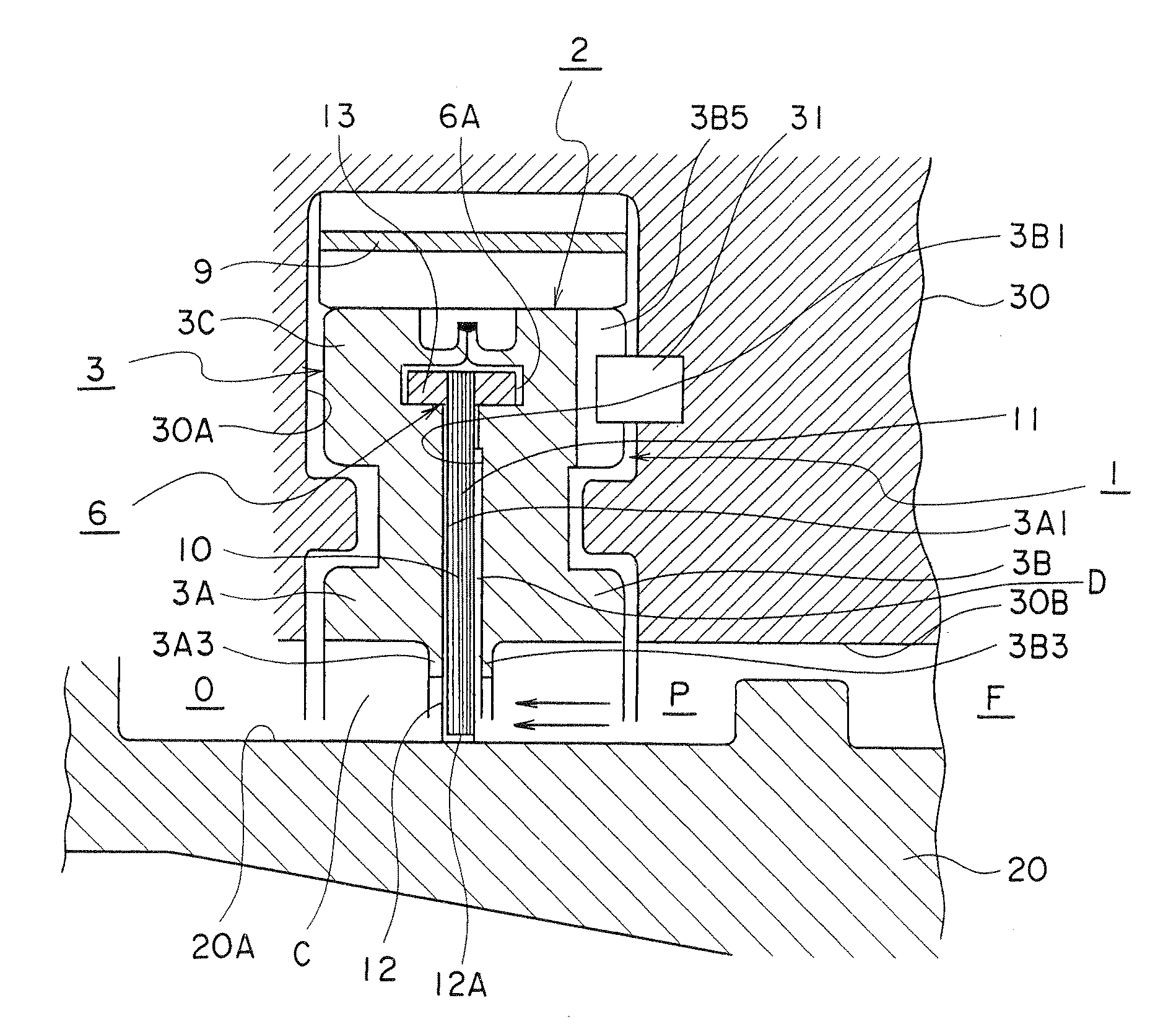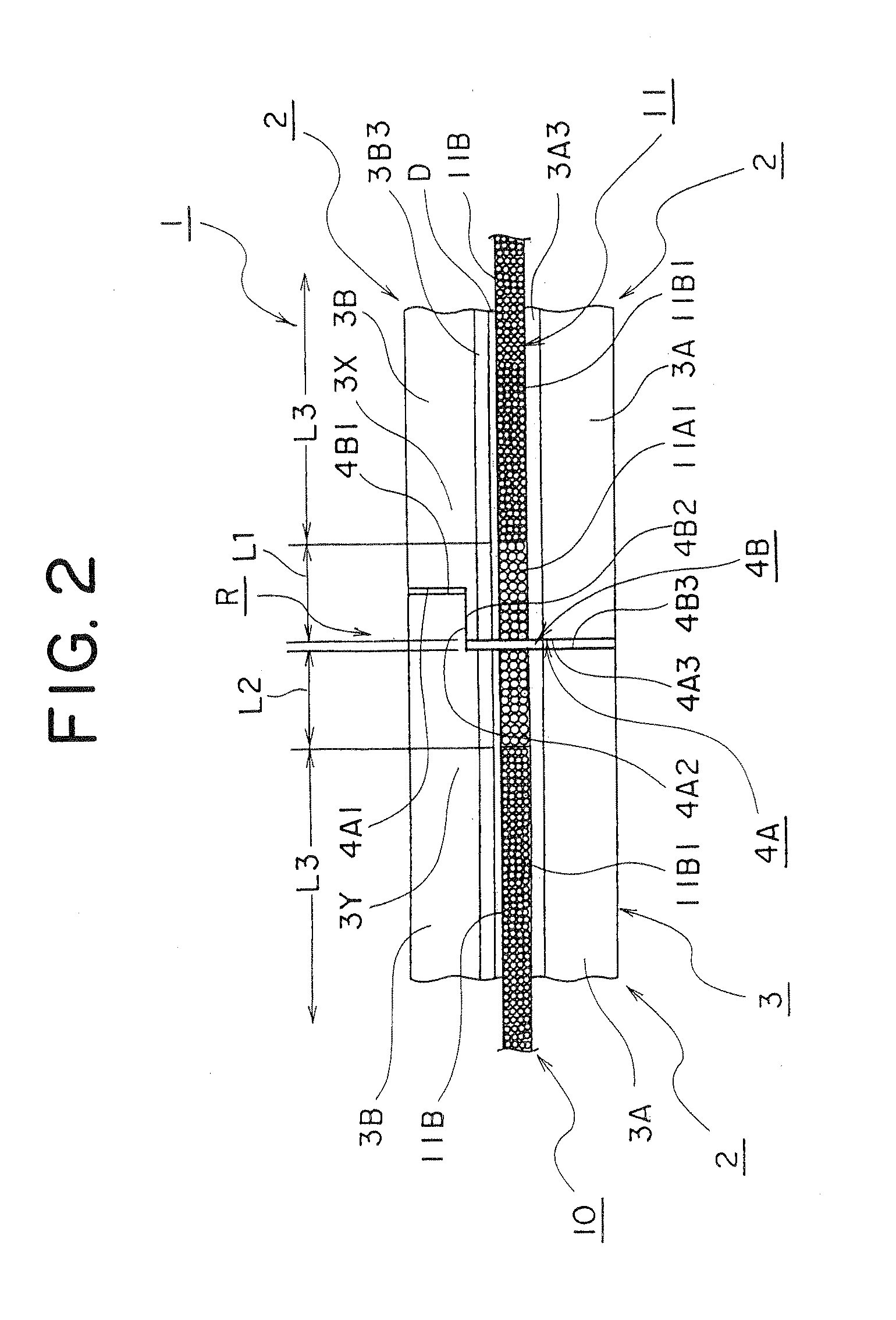Brush seal device
a brush seal and sealing device technology, applied in the direction of engine seals, gas turbine plants, machines/engines, etc., can solve the problems of deteriorating yield rate, difficult assembly, and reducing the performance of the brush seal devi
- Summary
- Abstract
- Description
- Claims
- Application Information
AI Technical Summary
Benefits of technology
Problems solved by technology
Method used
Image
Examples
first embodiment
[0078]This brush seal device seals, for example, the leaking of the high temperature and high pressure fluid, or cooling air from a gap between a stationary component and a rotary component. A brush seal of a preferred embodiment according to the present invention will be described. FIG. 1 shows one of divided brush seals 2 divided from a brush seal device 1. FIG. 2 is a front view viewing from an inner circumferential side of a connecting portion R of the two divided brush seals 2, 2 in the brush seal device 1. FIG. 4 is a cross sectional view along a line A-A of FIG. 1 when the brush seal device 1 is mounted to assembly components. This brush seal device 1 is formed in a ring shape by connecting first and second end portions 3X, 3Y of the divided brush seals 2. And, for example, in order to seal a gap C between the components of a turbine engine as shown in FIG. 4, the brush seal device 1 is equipped.
[0079]A rotor assembly 20 of the assembly components in the turbine engine is hel...
second embodiment
[0089]FIG. 3 is a cross sectional view showing a connecting portion R of a brush seal device 1 of a second embodiment according to the present invention. This connecting portion R of a first connecting face 4A and a second connecting face 4B is divided towards an axial direction inclined towards a circumferential direction of the brush seal device 1. Note that, in this connecting portion R, the a first length range L1 of a first bristle layer 11A of a first end portion 3X and a second length range L2 of a first bristle layer 11A of a second end portion 3Y may be formed within a range of 7 mm to 25 mm from the inner circumferential end faces of a first connecting face (end face) of the first bristle layer 11A of the first connecting face 4A side and a second connecting face (end face) of the first bristle layer 11A of the second connecting face 4B side to an inner circumferential direction of a second bristle layer 11B, respectively. More preferably, the first length range L1 and the...
third embodiment
[0091]FIG. 8 is a cross sectional view of a brush seal device 1 of a third embodiment according to the present invention. In FIG. 8, a different point from FIG. 4 is that it is possible to make an inner radial face 3A2 of a first seal plate 3A3 of a supporting plate 3A close to an outer circumferential face 20A of a rotor assembly 20 by making the inner radial face 3A2 of the first seal plate portion 3A3 of the supporting plate 3A smaller than an inner radial face 3B2 of a second seal plate 3B3 of a holding plate 3B. By this first seal plate portion 3A3, a seal portion 12 of a seal brush 10 can be supported strongly against a pressure of the sealing fluid. As a result of this, swinging of the seal brush 10 due to the fluctuating pressure of the sealing fluid can be prevented. Also, when a second bristle layer 11B tries to contact with a rotation member, it effectively prevents the wearing of a contact portion by the elastic deformation in response to a force of the tip side while su...
PUM
 Login to View More
Login to View More Abstract
Description
Claims
Application Information
 Login to View More
Login to View More - R&D
- Intellectual Property
- Life Sciences
- Materials
- Tech Scout
- Unparalleled Data Quality
- Higher Quality Content
- 60% Fewer Hallucinations
Browse by: Latest US Patents, China's latest patents, Technical Efficacy Thesaurus, Application Domain, Technology Topic, Popular Technical Reports.
© 2025 PatSnap. All rights reserved.Legal|Privacy policy|Modern Slavery Act Transparency Statement|Sitemap|About US| Contact US: help@patsnap.com



